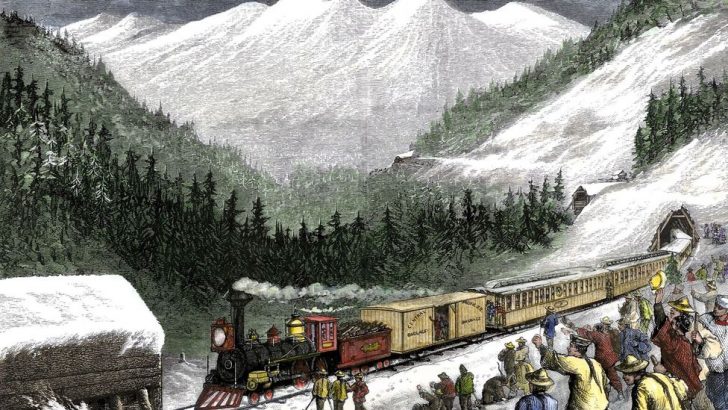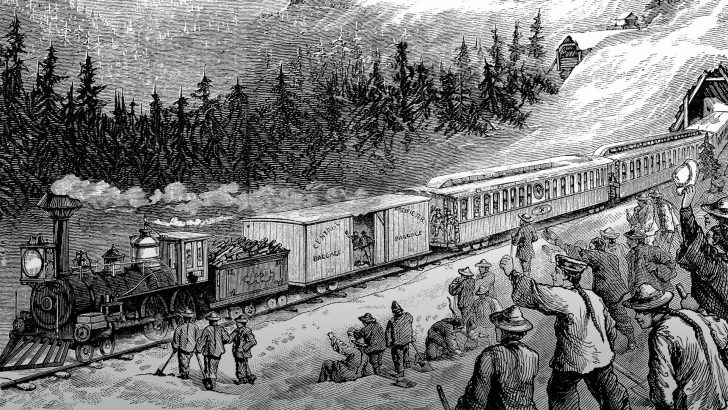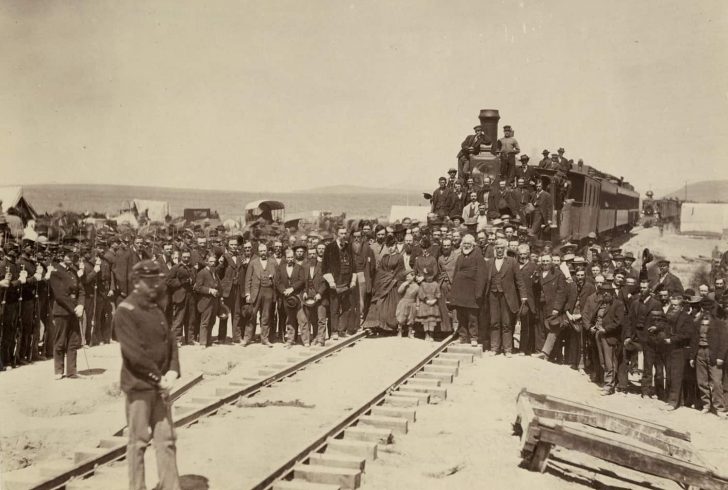When we think of game-changing inventions, our minds might first jump to the internet, smartphones, or even automobiles. But rewind to the 19th century and the Transcontinental Railroad was the talk of the town: A groundbreaking venture that promised to bind America's vast expanses.
So, what really made this railway more than just iron and steam? Let’s travel back to the thrilling age of the railroad and explore its transformative power.

Elle / The historic Transcontinental Railroad was not only bridging lands. Instead, it ended up transforming the fate of the U.S. once and for all.
Zooming Past Barriers
Before the era of instant messaging and overnight deliveries, news and goods took their sweet time traveling across the nation. However, the railroad's arrival was a game changer. It not only sped up communication but also opened up a world of possibilities for industries.
Picture fresh Atlantic seafood being savored in San Francisco or Pacific Coast timber-building homes in Nebraska. That is the Transcontinental Railroad magic.
Westward, the Dream Goes On!
Manifest Destiny. The belief that Americans were destined to span from coast to coast was not just a lofty idea. Instead, it was a tangible dream. With the railroad's opening, moving west was not just for the adventurous-hearted. It became a practical reality for thousands seeking opportunities, effectively turning the West into a hub of innovation and progress.

BBC / The Transcontinental Railroad, a herculean task at first, turned out to be a game changer for the U.S.
Heroes From Afar America's
The transcontinental story would not be complete without the unsung heroes: the workers. While most know about the American engineers and visionaries, few recognize the international backbone: The Chinese, Irish, and other immigrant workers. Braving harsh conditions, they not only built tracks but also laid the foundation for America's multicultural identity.
Dawn of a New Era - Literally
Ever grumbled about daylight savings? Well, ponder upon a time when each town had its own local time! Chaos, right? The railroad changed that by pioneering the concept of time zones. By introducing four distinct time regions in 1883, trains could now run on a standardized schedule. Thus, giving the Americans the system they use today.
However, as the nation reveled in the marvel of connectivity, nature bore the brunt. Vast plains, once teeming with bison, saw their numbers dwindle as hunters accessed remote areas with ease. Moreover, the tribes that depended on these lands found their world upturned, a poignant reminder of the often-overlooked cost of advancement.

Times / The building of the Transcontinental Railroad was the dawn of a new era for Americans.
More Than Just a Railroad
While the Transcontinental Railroad bridged geographical divides, it also healed national wounds. In the wake of the Civil War, it emerged as a beacon of unity and reconciliation. The joining of tracks at Promontory Point, Utah, was not merely physical. Instead, it symbolized a nation reknitting its frayed edges.
Today, as we zip from one coast to another without a second thought, it is intriguing to remember a time when such a journey was nothing short of revolutionary. The Transcontinental Railroad was not merely about iron tracks or roaring engines. Instead, it was about ambition, resilience, and an ever-evolving nation.

